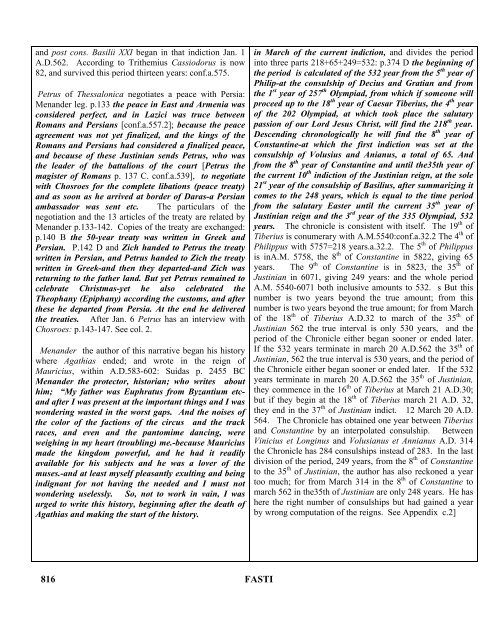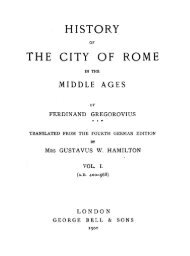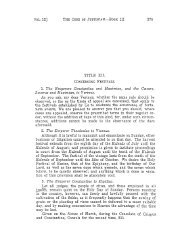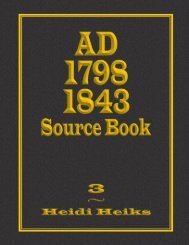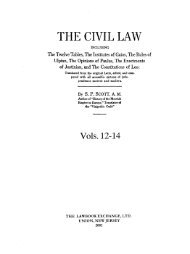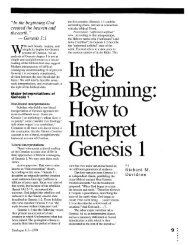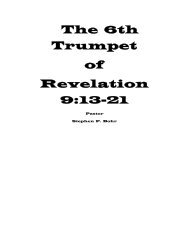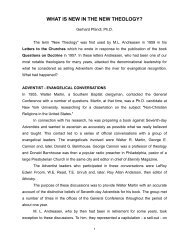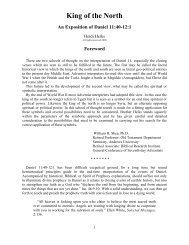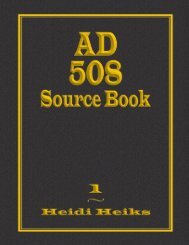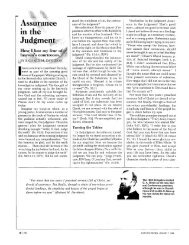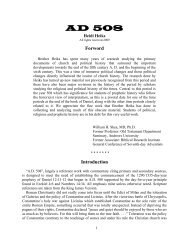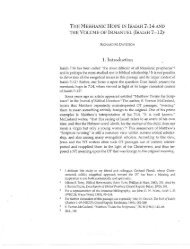FASTI ROMANI ROME AND CONSTANTINOPLE
FASTI ROMANI ROME AND CONSTANTINOPLE
FASTI ROMANI ROME AND CONSTANTINOPLE
You also want an ePaper? Increase the reach of your titles
YUMPU automatically turns print PDFs into web optimized ePapers that Google loves.
and post cons. Basilii XXI began in that indiction Jan. 1<br />
A.D.562. According to Trithemius Cassiodorus is now<br />
82, and survived this period thirteen years: conf.a.575.<br />
Petrus of Thessalonica negotiates a peace with Persia:<br />
Menander leg. p.133 the peace in East and Armenia was<br />
considered perfect, and in Lazici was truce between<br />
Romans and Persians [conf.a.557.2]; because the peace<br />
agreement was not yet finalized, and the kings of the<br />
Romans and Persians had considered a finalized peace,<br />
and because of these Justinian sends Petrus, who was<br />
the leader of the battalions of the court [Petrus the<br />
magister of Romans p. 137 C. conf.a.539], to negotiate<br />
with Chosroes for the complete libations (peace treaty)<br />
and as soon as he arrived at border of Daras-a Persian<br />
ambassador was sent etc. The particulars of the<br />
negotiation and the 13 articles of the treaty are related by<br />
Menander p.133-142. Copies of the treaty are exchanged:<br />
p.140 B the 50-year treaty was written in Greek and<br />
Persian. P.142 D and Zich handed to Petrus the treaty<br />
written in Persian, and Petrus handed to Zich the treaty<br />
written in Greek-and then they departed-and Zich was<br />
returning to the father land. But yet Petrus remained to<br />
celebrate Christmas-yet he also celebrated the<br />
Theophany (Epiphany) according the customs, and after<br />
these he departed from Persia. At the end he delivered<br />
the treaties. After Jan. 6 Petrus has an interview with<br />
Chosroes: p.143-147. See col. 2.<br />
Menander the author of this narrative began his history<br />
where Agathias ended; and wrote in the reign of<br />
Mauricius, within A.D.583-602: Suidas p. 2455 BC<br />
Menander the protector, historian; who writes about<br />
him; “My father was Euphratus from Byzantium etcand<br />
after I was present at the important things and I was<br />
wondering wasted in the worst gaps. And the noises of<br />
the color of the factions of the circus and the track<br />
races, and even and the pantomime dancing, were<br />
weighing in my heart (troubling) me.-because Mauricius<br />
made the kingdom powerful, and he had it readily<br />
available for his subjects and he was a lover of the<br />
muses.-and at least myself pleasantly exulting and being<br />
indignant for not having the needed and I must not<br />
wondering uselessly. So, not to work in vain, I was<br />
urged to write this history, beginning after the death of<br />
Agathias and making the start of the history.<br />
816 <strong>FASTI</strong><br />
in March of the current indiction, and divides the period<br />
into three parts 218+65+249=532: p.374 D the beginning of<br />
the period is calculated of the 532 year from the 5 th year of<br />
Philip-at the consulship of Decius and Gratian and from<br />
the 1 st year of 257 th Olympiad, from which if someone will<br />
proceed up to the 18 th year of Caesar Tiberius, the 4 th year<br />
of the 202 Olympiad, at which took place the salutary<br />
passion of our Lord Jesus Christ, will find the 218 th year.<br />
Descending chronologically he will find the 8 th year of<br />
Constantine-at which the first indiction was set at the<br />
consulship of Volusius and Anianus, a total of 65. And<br />
from the 8 th year of Constantine and until the35th year of<br />
the current 10 th indiction of the Justinian reign, at the sole<br />
21 st year of the consulship of Basilius, after summarizing it<br />
comes to the 248 years, which is equal to the time period<br />
from the salutary Easter until the current 35 th year of<br />
Justinian reign and the 3 rd year of the 335 Olympiad, 532<br />
years. The chronicle is consistent with itself. The 19 th of<br />
Tiberius is conumerary with A.M.5540:conf.a.32.2 The 4 th of<br />
Philippus with 5757=218 years.a.32.2. The 5 th of Philippus<br />
is inA.M. 5758, the 8 th of Constantine in 5822, giving 65<br />
years. The 9 th of Constantine is in 5823, the 35 th of<br />
Justinian in 6071, giving 249 years: and the whole period<br />
A.M. 5540-6071 both inclusive amounts to 532. s But this<br />
number is two years beyond the true amount; from this<br />
number is two years beyond the true amount; for from March<br />
of the 18 th of Tiberius A.D.32 to march of the 35 th of<br />
Justinian 562 the true interval is only 530 years, and the<br />
period of the Chronicle either began sooner or ended later.<br />
If the 532 years terminate in march 20 A.D.562 the 35 th of<br />
Justinian, 562 the true interval is 530 years, and the period of<br />
the Chronicle either began sooner or ended later. If the 532<br />
years terminate in march 20 A.D.562 the 35 th of Justinian,<br />
they commence in the 16 th of Tiberius at March 21 A.D.30;<br />
but if they begin at the 18 th of Tiberius march 21 A.D. 32,<br />
they end in the 37 th of Justinian indict. 12 March 20 A.D.<br />
564. The Chronicle has obtained one year between Tiberius<br />
and Constantine by an interpolated consulship. Between<br />
Vinicius et Longinus and Volusianus et Annianus A.D. 314<br />
the Chronicle has 284 consulships instead of 283. In the last<br />
division of the period, 249 years, from the 8 th of Constantine<br />
to the 35 th of Justinian, the author has also reckoned a year<br />
too much; for from March 314 in the 8 th of Constantine to<br />
march 562 in the35th of Justinian are only 248 years. He has<br />
here the right number of consulships but had gained a year<br />
by wrong computation of the reigns. See Appendix c.2]


